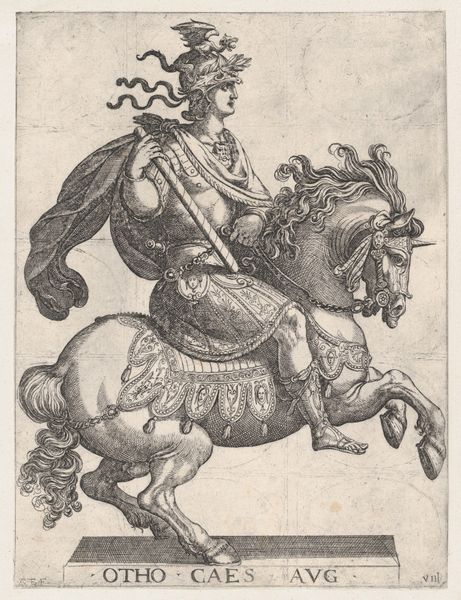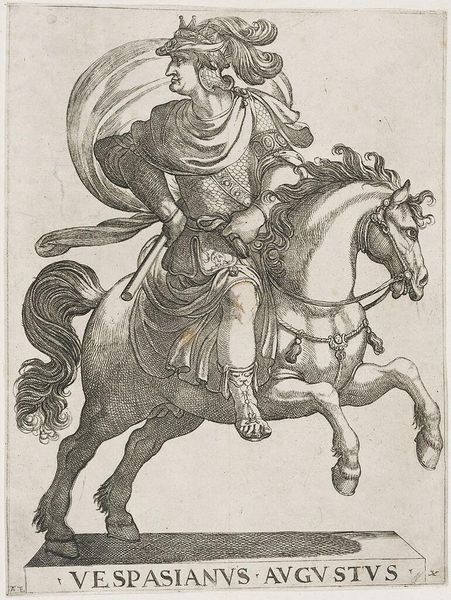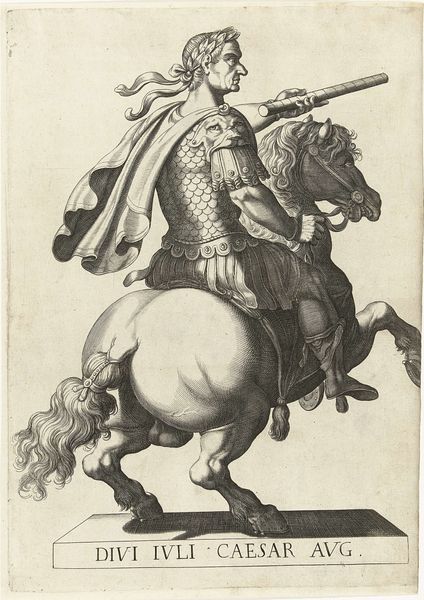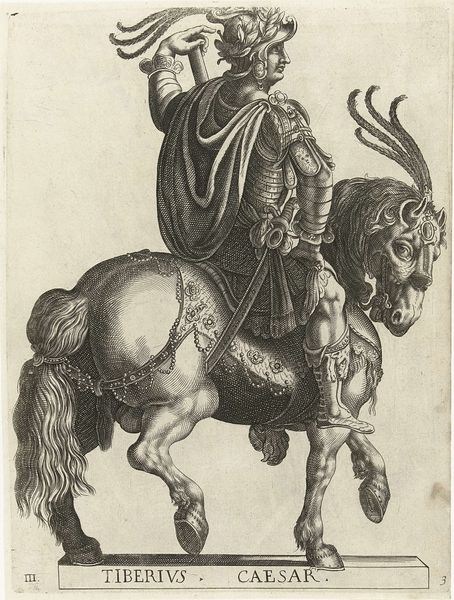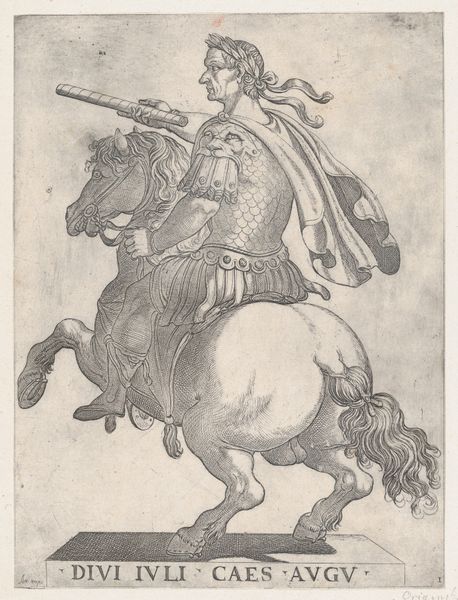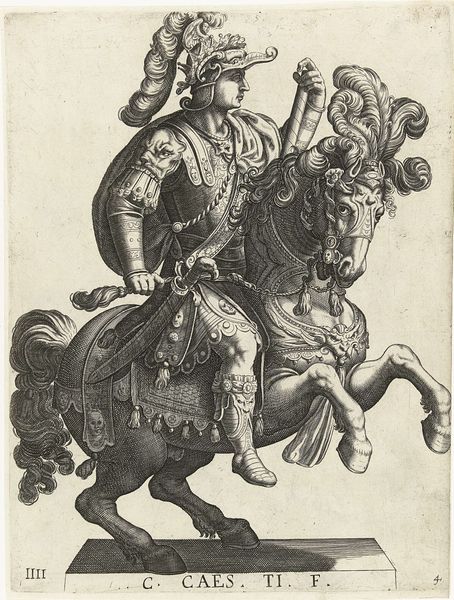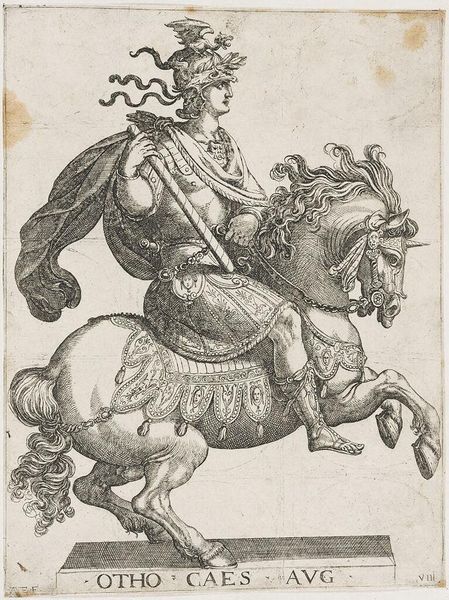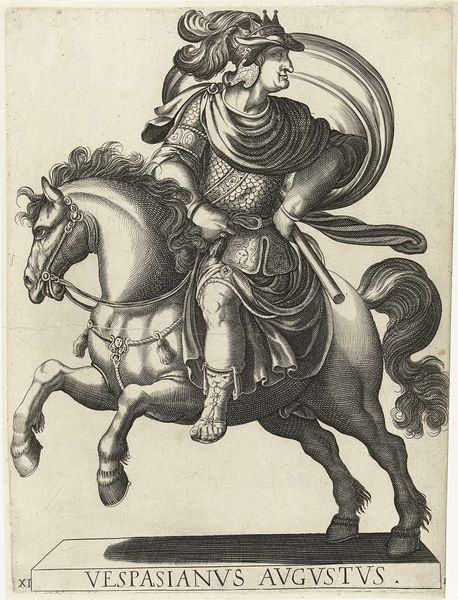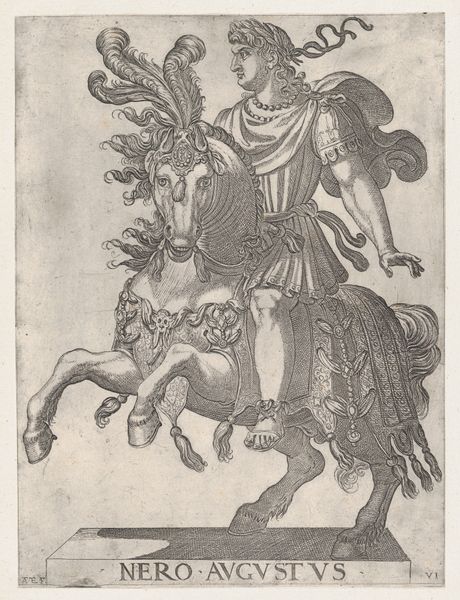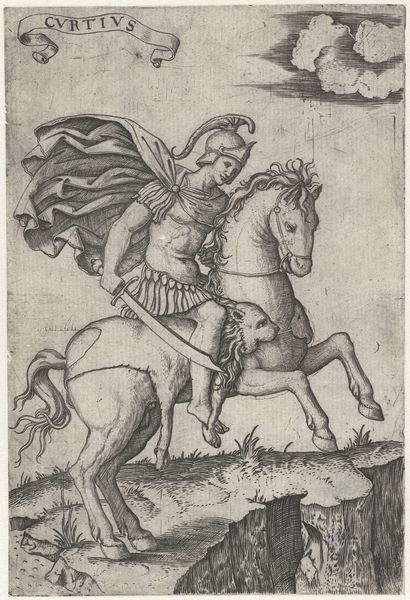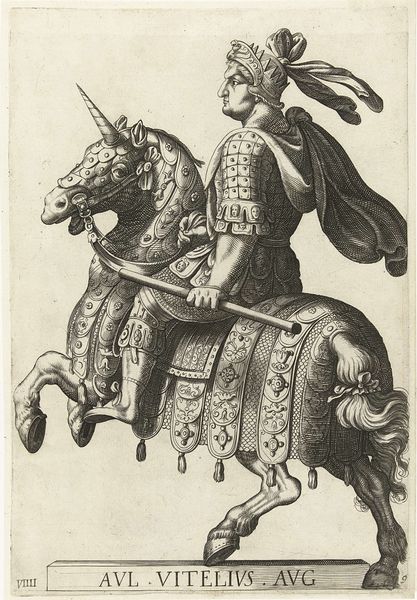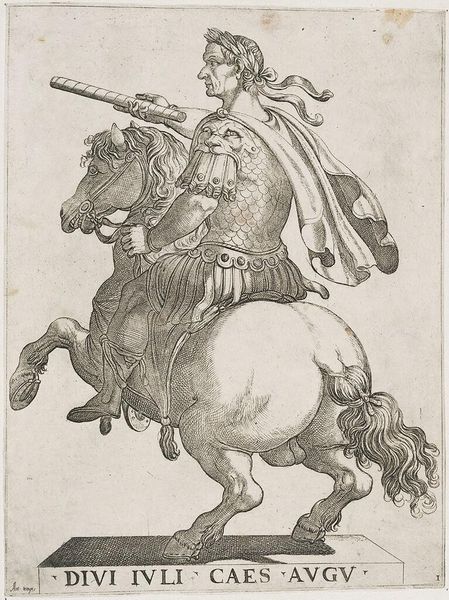
print, engraving
#
portrait
#
baroque
# print
#
figuration
#
genre-painting
#
history-painting
#
academic-art
#
engraving
Dimensions: height 301 mm, width 226 mm
Copyright: Rijks Museum: Open Domain
Laurens Eillarts made this engraving, Rider Portrait of Emperor Otho, sometime in the 17th century. Eillarts probably never saw Otho, who ruled as Roman emperor for only three months in 69 AD. Yet, by the 1600s, it was conventional for European rulers to associate themselves with the Caesars through commissioned portraits. Otho’s likeness here, bearing an imperial cape, staff, and laurel wreath, is not so much a faithful portrait as a symbol of the power embodied in Roman imperial institutions. This image creates meaning through visual codes. By the 17th century, equestrian portraits, like those of Otho, were commonly associated with powerful monarchs and were considered a way of demonstrating the strength and authority of the sitter. To better understand this image, historical sources like numismatic records might show us the circulation of Otho’s imperial image. We might also look at the history of the printmaking guild to see how this image circulated commercially. The meaning of art is contingent on these kinds of social and institutional contexts.
Comments
No comments
Be the first to comment and join the conversation on the ultimate creative platform.
